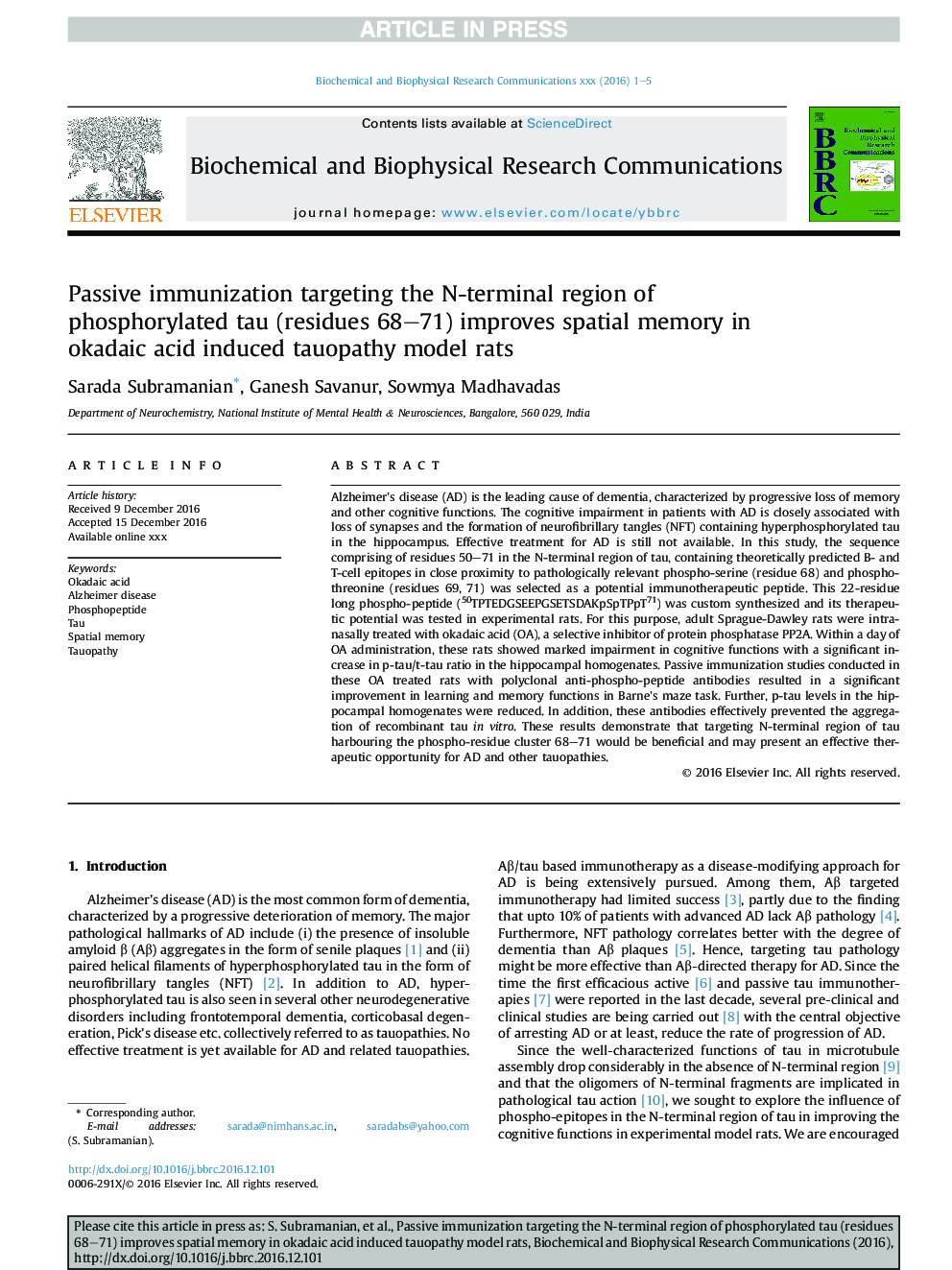| کد مقاله | کد نشریه | سال انتشار | مقاله انگلیسی | نسخه تمام متن |
|---|---|---|---|---|
| 5505637 | 1400273 | 2017 | 5 صفحه PDF | دانلود رایگان |
عنوان انگلیسی مقاله ISI
Passive immunization targeting the N-terminal region of phosphorylated tau (residues 68-71) improves spatial memory in okadaic acid induced tauopathy model rats
دانلود مقاله + سفارش ترجمه
دانلود مقاله ISI انگلیسی
رایگان برای ایرانیان
کلمات کلیدی
موضوعات مرتبط
علوم زیستی و بیوفناوری
بیوشیمی، ژنتیک و زیست شناسی مولکولی
زیست شیمی
پیش نمایش صفحه اول مقاله

چکیده انگلیسی
Alzheimer's disease (AD) is the leading cause of dementia, characterized by progressive loss of memory and other cognitive functions. The cognitive impairment in patients with AD is closely associated with loss of synapses and the formation of neurofibrillary tangles (NFT) containing hyperphosphorylated tau in the hippocampus. Effective treatment for AD is still not available. In this study, the sequence comprising of residues 50-71 in the N-terminal region of tau, containing theoretically predicted B- and T-cell epitopes in close proximity to pathologically relevant phospho-serine (residue 68) and phospho-threonine (residues 69, 71) was selected as a potential immunotherapeutic peptide. This 22-residue long phospho-peptide (50TPTEDGSEEPGSETSDAKpSpTPpT71) was custom synthesized and its therapeutic potential was tested in experimental rats. For this purpose, adult Sprague-Dawley rats were intranasally treated with okadaic acid (OA), a selective inhibitor of protein phosphatase PP2A. Within a day of OA administration, these rats showed marked impairment in cognitive functions with a significant increase in p-tau/t-tau ratio in the hippocampal homogenates. Passive immunization studies conducted in these OA treated rats with polyclonal anti-phospho-peptide antibodies resulted in a significant improvement in learning and memory functions in Barne's maze task. Further, p-tau levels in the hippocampal homogenates were reduced. In addition, these antibodies effectively prevented the aggregation of recombinant tau in vitro. These results demonstrate that targeting N-terminal region of tau harbouring the phospho-residue cluster 68-71 would be beneficial and may present an effective therapeutic opportunity for AD and other tauopathies.
ناشر
Database: Elsevier - ScienceDirect (ساینس دایرکت)
Journal: Biochemical and Biophysical Research Communications - Volume 483, Issue 1, 29 January 2017, Pages 585-589
Journal: Biochemical and Biophysical Research Communications - Volume 483, Issue 1, 29 January 2017, Pages 585-589
نویسندگان
Sarada Subramanian, Ganesh Savanur, Sowmya Madhavadas,